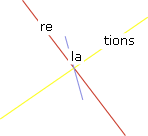|
|
by Konstantin Akinsha
[…] At last, the German TV reporters set Mr. Kozicki free and I had a chance to ask him a few questions. Marek Kozicki proved to be a tall, well-mannered man with a short haircut. I tried to get from him a description of the conception behind the future Museum of Communism. He was not the first person in Warsaw whom I asked this question. At first, Kozicki attempted to give me a general description of the idea. It was instantly clear that he had repeated his explanation many times before. However, after my inquires as to why the Museum of Communism as such has to be located in Warsaw, Kozicki deviated from the well-rehearsed version and told me that he believed that the future institution should be dedicated not so much to communism in general, but to the life of Polish people during the years of socialism. As he spoke, the project coordinator became increasingly animated, as he declared that the museum should not only recreate the interiors of the period, but also employ actors who would reenact different life situations typical for the socialist years, from lines in food stores to the interrogation of political prisoners. His fancy carried him away a bit, as he stated proudly that "We will even reconstruct the smells of communism."
His words took me by surprise. I tried to remember the smells of my own personal communism—the odors of Soviet life of the 1960s–1980s. We had many of them: the odor of rotten cabbage in the dining halls, the trademark army barracks funk of sweat and shoe polish, the fragrance of Red Moscow perfume (sold in bottles produced in the shape of the Kremlin Spassky Tower and adored by my grandmother), the sharp smell of the cheap "Triple" eau de Cologne frequently consumed by alcoholics as an affordable substitute for vodka and, of course, the all-penetrating stink of chlorine used for disinfection purposes everywhere from public toilets to prisons. I was not sure that all of those smells (maybe with the exception of the Red Moscow perfume) were specifically "communist." As I began to muse that it is possible that Polish—not to mention Chinese or Cuban—communism could smell different than my Soviet past, Mr. Kozicki unexpectedly changed the topic. He admitted that the organizers of the museum had no concrete conception of the future institution and that they were planning to organize a conference—to invite museum experts to discuss how the museum should be arranged. "We are not museum professionals," the coordinator conceded.
A few days prior to this memorable Saturday on which the population of Warsaw was invited to "bring communism to the museum" I was sitting in the office of Czesław Bielecki, an architect and the former Chairman of the Foreign Relations Committee of the Polish Sejm. Bielecki knew what communism was only too well—he was one of the founders of the democratic opposition in Poland in the mid-1970s and had spent some time in prison. In later years, Bielecki was the moving force behind the establishment of the Socland Foundation. The creation of the Museum of Communism was his old dream. The foundation, established in 1999, includes such celebrities on its board as film director Andrzej Wajda. The list of honorary members includes Zbigniew Brzezinski, the former US National Security Adviser, French historian Alain Besançon, and former Czech President Václav Havel. "Look at the font!"—Bielecki exclaimed, pointing to the logo of the foundation. "We’re using the same font that was used for the name of Tribuna Ludu, the main party newspaper. Every Pole who lived during that time can recognize it." The architect’s eyes glistened with excitement behind the lenses of his heavy rimmed glasses. Bielecki was thrilled at the idea that the future museum would be interactive. In 2003, his foundation had already organized an exhibition in the cellars of the Palace of Culture, which was rich in various computer tricks—visitors entered a room where documentary footage of the May Day parade was shown and then they unexpectedly could see themselves among crowds waving to the party leaders; in the other hall they could recognize themselves among the strikers at the Lenin Shipyard in Gdańsk. Bielecki’s special pride was the "interrogation machine." Here, people entering a room decorated as an interrogation office were met by the screaming voice of invisible secret policemen demanding that prisoners sign their "confession."
Bielecki’s vision of the future museum was a mixture of a memorial to victims and high-tech entertainment park. The foundation’s name was not accidental—Socland is directly related to another entertainment venue, one deprived, however, of the stern seriousness of "retrospective justice": Disneyland in Florida. […]
Konstantin Akinsha was born in Kiev in 1960. In the 1990s Moscow correspondent and contributing editor of ARTnews magazine, New York. He worked on the confiscation of cultural property during World War II and, amongst other engagements, was a research fellow of Kunstverein Bremen, Research Center for East European Studies, University of Bremen, and Germanisches Nationalmuseum. 1999–2000 deputy research director of Art and Cultural Property of the Presidential Advisory Commission on Holocaust Assets in the United States. One of his most important publications is the book Beautiful Loot: Soviet Plunder of European Art Treasures (1995).
The present text is an excerpt from Konstantin Akinsha’s contribution to Leap into the City.
